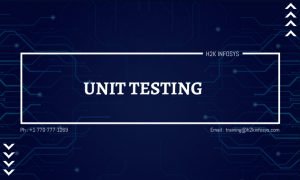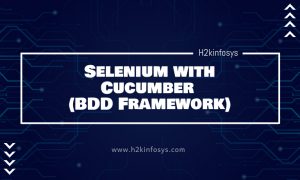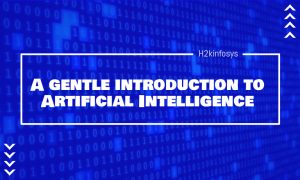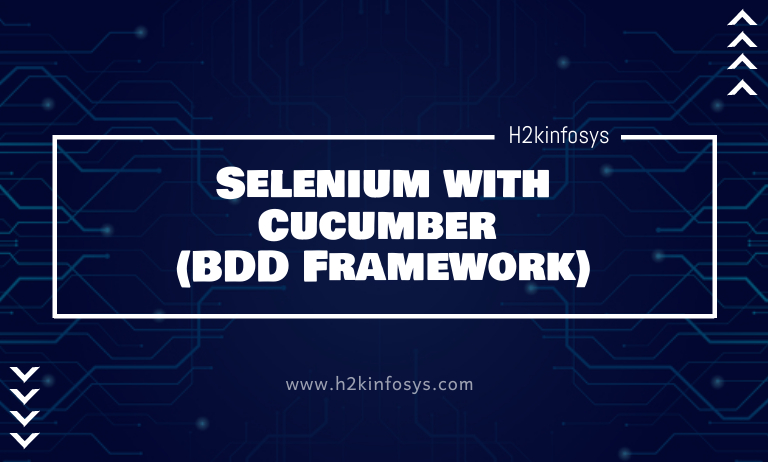As the demand for .NET architects continues to grow, seasoned professionals must be prepared to answer advanced interview questions that showcase their expertise. This blog will explore some of the most challenging questions you may encounter during a .NET Architect Interview Questions along with insights into how to answer them effectively.
Understanding the .NET Framework and Its Evolution
Can you explain the differences between .NET Framework, .NET Core, and .NET 5/6?
.NET Framework is the original implementation of .NET, primarily used for building Windows applications. It includes a comprehensive class library, runtime, and other components. .NET Core, introduced as a cross-platform alternative, offers a modular and lightweight architecture. It supports Windows, macOS, and Linux. .NET 5/6 represents the unification of .NET Framework and .NET Core, offering a single platform for building any type of application with improved performance, new APIs, and enhancements.
When answering this question, highlight your understanding of the key differences, the evolution of the platform, and the strategic advantages of migrating to .NET 5/6.
What are the key features introduced in .NET 6? How do they benefit application development?
.NET 6 introduced several new features, including improved performance, C# 10 language features, enhanced security, hot reload, and improved diagnostics. These features simplify development, improve runtime efficiency, and provide better tools for debugging and monitoring applications.
Discuss specific use cases where these features can be beneficial, such as leveraging hot reload for faster iteration during development or using C# 10’s new language features to write more concise code.
Architectural Design Patterns and Best Practices
How would you approach designing a microservices architecture using .NET?
Designing a microservices architecture involves breaking down an application into smaller, loosely coupled services that can be developed, deployed, and scaled independently. Key considerations include defining service boundaries, selecting communication protocols (e.g., REST, gRPC), implementing API gateways, and ensuring observability through logging, monitoring, and tracing.
When discussing your approach, emphasize the importance of adhering to best practices, such as ensuring data consistency, handling service failures gracefully, and implementing security measures like authentication and authorization.
Can you explain the CQRS pattern and how it can be implemented in a .NET application?
The Command Query Responsibility Segregation (CQRS) pattern separates the read and write operations of an application, allowing them to be optimized independently. In a .NET application, CQRS can be implemented using separate models for reading and writing data, often combined with event sourcing to maintain an audit trail of changes.
Discuss scenarios where CQRS can improve performance and scalability, such as applications with high read-write disparity or complex business rules. Highlight the potential challenges, such as eventual consistency and increased complexity, and how to mitigate them.
Advanced Topics in .NET Development
What are some advanced techniques for optimizing performance in .NET applications?
Optimizing performance in .NET applications involves various techniques, such as:
- Asynchronous programming: Using async/await to avoid blocking threads.
- Memory management: Minimizing memory allocations and avoiding memory leaks.
- Caching: Implementing caching strategies to reduce database and API calls.
- Parallel processing: Utilizing parallelism to execute tasks concurrently.
Provide examples of how you’ve implemented these techniques in past projects, along with the performance improvements achieved. Discuss tools like the .NET Performance Profiler and memory analyzers for identifying bottlenecks.
How do you handle security concerns in .NET applications?
Security is a critical aspect of any application. In .NET, common security measures include:
- Data protection: Encrypting sensitive data at rest and in transit.
- Authentication and authorization: Implementing secure authentication (e.g., OAuth, OpenID Connect) and role-based access control (RBAC).
- Input validation: Preventing injection attacks (e.g., SQL injection, cross-site scripting) by validating and sanitizing user input.
Discuss your experience implementing security best practices, conducting security assessments, and staying updated with the latest security threats and mitigation strategies.
Integration and Interoperability
How would you integrate a .NET application with other systems, such as legacy systems or third-party APIs?
Integration with other systems can be achieved through various methods, such as:
- Web services: Using RESTful APIs, SOAP, or gRPC.
- Message queues: Implementing messaging systems like RabbitMQ or Azure Service Bus for asynchronous communication.
- Data integration: Utilizing ETL processes or data synchronization techniques.
Describe your experience with these integration methods, including challenges encountered and solutions implemented. Highlight the importance of designing robust error-handling mechanisms and ensuring data consistency.
What are the considerations for building cross-platform applications with .NET?
Building cross-platform applications with .NET involves using technologies like .NET MAUI for mobile and desktop applications or Blazor for web applications. Key considerations include:
- Platform-specific functionality: Handling differences in UI/UX, hardware capabilities, and system APIs.
- Testing: Ensuring thorough testing across all target platforms.
- Deployment: Managing deployment pipelines for multiple platforms.
Discuss your experience with cross-platform development and the tools and frameworks used to streamline the process. Highlight any challenges faced, such as platform-specific bugs, and how you addressed them.
Recommended to Read Also: QA analyst Certification
DevOps and Continuous Delivery
How do you approach implementing CI/CD pipelines for .NET projects?
Continuous Integration (CI) and Continuous Delivery (CD) pipelines automate the build, test, and deployment processes, ensuring faster and more reliable releases. In .NET projects, CI/CD pipelines can be implemented using tools like Azure DevOps, Jenkins, or GitHub Actions.
Outline your experience setting up CI/CD pipelines, including configuring build agents, automating unit and integration tests, and deploying to various environments (e.g., development, staging, production). Emphasize the importance of monitoring and rollback mechanisms to minimize downtime and ensure stability.
What are some best practices for maintaining and evolving .NET applications in a production envronment?
Maintaining and evolving .NET applications in production requires a proactive approach, including:
- Monitoring: Using tools like Application Insights or New Relic to monitor application performance and detect issues.
- Logging: Implementing structured logging for better insights and debugging.
- Scalability: Designing for scalability, such as using load balancers and scaling out services.
- Upgrades: Keeping the application stack and dependencies up-to-date to avoid security vulnerabilities and leverage new features.
Share your experience with production maintenance, including examples of challenges faced (e.g., performance issues, security incidents) and how they were resolved. Highlight the importance of a robust incident response plan and continuous improvement.
Future Trends and Emerging Technologies
What are some emerging trends in .NET development that you are excited about?
The .NET ecosystem is continuously evolving, with new trends and technologies emerging. Some of the exciting trends include:
- Microservices and containerization: Leveraging Docker and Kubernetes for scalable microservices architectures.
- Serverless computing: Using Azure Functions or AWS Lambda for event-driven applications.
- Machine learning and AI: Integrating machine learning models using ML.NET or other frameworks.
Discuss your thoughts on these trends, how you’ve explored them in your projects, and their potential impact on the future of software development.
How do you stay updated with the latest advancements in .NET and software architecture?
Staying updated with the latest advancements is crucial for a .NET architect. Some effective ways to stay informed include:
- Community engagement: Participating in conferences, webinars, and user groups.
- Online resources: Following blogs, podcasts, and online courses.
- Hands-on practice: Experimenting with new technologies and building proof-of-concept projects.
Share your approach to continuous learning, including specific resources you find valuable and how you apply new knowledge to your work.
Creating a list of interview questions for a .NET Architect position involves covering a range of topics, including software design, architecture principles, .NET framework knowledge, and practical experience. Here’s a list of interview questions that can be used to assess a candidate’s expertise:
General .NET Architect Interview Questions and Design Questions
- What is the role of a .NET Architect in a software development team?
- Can you explain the key principles of software architecture and how you apply them in your work?
- How do you approach designing a scalable and maintainable system?
- What are the common architectural patterns you’ve used, and when would you choose one over another?
- How do you ensure the security of a .NET application?
.NET Framework and Technologies
- What is the difference between .NET Framework, .NET Core, and .NET 5/6/7?
- Can you explain the key features and benefits of using ASP.NET Core?
- How do you manage dependencies in .NET projects?
- What are the key differences between synchronous and asynchronous programming in .NET?
- How do you implement dependency injection in .NET applications?
Design Patterns and Best Practices
- What design patterns have you used in your previous projects, and can you give an example of how one was implemented?
- How do you handle error and exception management in .NET applications?
- Can you explain SOLID principles and how you apply them in .NET architecture?
- What strategies do you use for caching in .NET applications?
Microservices and Cloud Integration
- Have you worked with microservices architecture? If so, how do you handle inter-service communication?
- How do you deploy .NET applications to the cloud, and what platforms have you used (e.g., Azure, AWS)?
- Can you describe a situation where you used containerization (e.g., Docker) with .NET applications?
Performance and Optimization
- How do you identify and resolve performance bottlenecks in .NET applications?
- What tools and techniques do you use for profiling and monitoring .NET applications?
- Can you explain how to optimize database interactions in .NET applications?
Team and Project Management
- How do you ensure effective communication and collaboration between developers and other stakeholders?
- What methodologies (e.g., Agile, Scrum) have you used in your projects, and how did they influence your architecture decisions?
- How do you handle technical debt in a long-term project?
Conclusion
In a .NET architect interview, seasoned professionals must demonstrate their deep understanding of the .NET ecosystem, architectural design patterns, and best practices. By preparing for these advanced questions, you can showcase your expertise and stand out as a top candidate. Remember to draw on your experience, provide specific examples, and articulate your thought process clearly. With thorough preparation, you can confidently navigate the complexities of a .NET architect interview and secure your next role.
























